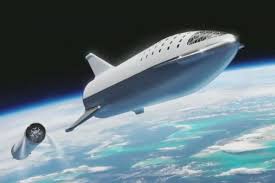
Breaking News
 James O'Keefe: My entire speech at AmericaFest 2025. We're not stopping. Join us to expose..
James O'Keefe: My entire speech at AmericaFest 2025. We're not stopping. Join us to expose..
 U.S. vs. Chinese Military Comparison – Focus on Asia-Taiwan Scenario
U.S. vs. Chinese Military Comparison – Focus on Asia-Taiwan Scenario
 DoJ Sues Four More States for Failing To Produce Voter-roll Data
DoJ Sues Four More States for Failing To Produce Voter-roll Data
 World's Largest Aviation Giant Abandons Google Over Security Concerns
World's Largest Aviation Giant Abandons Google Over Security Concerns
Top Tech News
 Perfect Aircrete, Kitchen Ingredients.
Perfect Aircrete, Kitchen Ingredients.
 Futuristic pixel-raising display lets you feel what's onscreen
Futuristic pixel-raising display lets you feel what's onscreen
 Cutting-Edge Facility Generates Pure Water and Hydrogen Fuel from Seawater for Mere Pennies
Cutting-Edge Facility Generates Pure Water and Hydrogen Fuel from Seawater for Mere Pennies
 This tiny dev board is packed with features for ambitious makers
This tiny dev board is packed with features for ambitious makers
 Scientists Discover Gel to Regrow Tooth Enamel
Scientists Discover Gel to Regrow Tooth Enamel
 Vitamin C and Dandelion Root Killing Cancer Cells -- as Former CDC Director Calls for COVID-19...
Vitamin C and Dandelion Root Killing Cancer Cells -- as Former CDC Director Calls for COVID-19...
 Galactic Brain: US firm plans space-based data centers, power grid to challenge China
Galactic Brain: US firm plans space-based data centers, power grid to challenge China
 A microbial cleanup for glyphosate just earned a patent. Here's why that matters
A microbial cleanup for glyphosate just earned a patent. Here's why that matters
 Japan Breaks Internet Speed Record with 5 Million Times Faster Data Transfer
Japan Breaks Internet Speed Record with 5 Million Times Faster Data Transfer
NASA Assessment Reveals SpaceX Super Heavy Starship Details

Plan for 24 Launches Per Year
The SpaceX goal is to eventually launch Starship/Super Heavy approximately 24 times per year. As Starship/Super Heavy launches gradually increase to 24 launches per year, the number of launches of the Falcon would decrease. The Starship and Super Heavy would exceed the lift capabilities of the Falcon Heavy. Due to the higher lift capability, Starship/Super Heavy could launch more payloads and reduce the overall launch cadence when compared to Falcon 9 and Falcon Heavy. This would increase the cost-effectiveness of the space industry. Starship/Super Heavy missions would include Lunar and Mars destinations, currently not supported by any other space vehicle, increased satellite payload missions, and human spaceflight. Missions could range from tests of the launch vehicle and ship, to cargo delivery. The manifest is incomplete at this time but would evolve as the rocket develops. There could be multiple launches in close succession required to support a single mission (i.e., Lunar Program sending multiple payloads to resupply). Prior to launch, during initial phases of Starship/Super Heavy development, SpaceX would perform rehearsals without propellants on the vehicle (dry) and rehearsals with propellants on the vehicle (wet) to verify full launch readiness. Dry and wet rehearsals were conducted during the development of the Falcon 9. A static fire test of the Super Heavy booster and the Starship would be performed prior to each launch. The static tests would be similar to that currently done for Falcon, with the booster held in place while engines are ignited to simulate the initial stage of launch. The test would be used to assess the performance of the Raptor engines prior to launch.
Landing pad 39A will get new structures and upgrades to existing facilities.

 Advanced Propulsion Resources Part 1 of 2
Advanced Propulsion Resources Part 1 of 2

